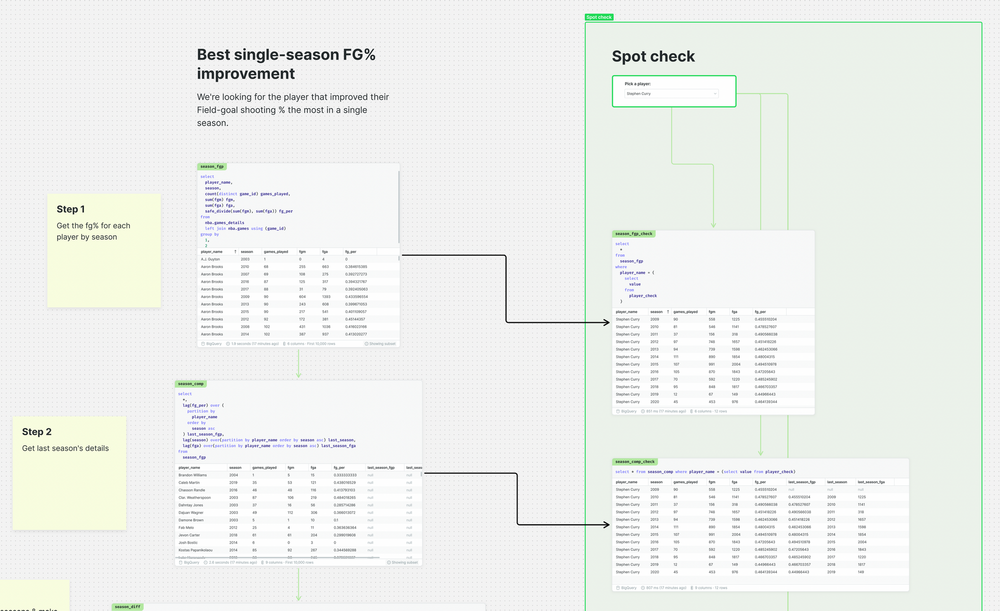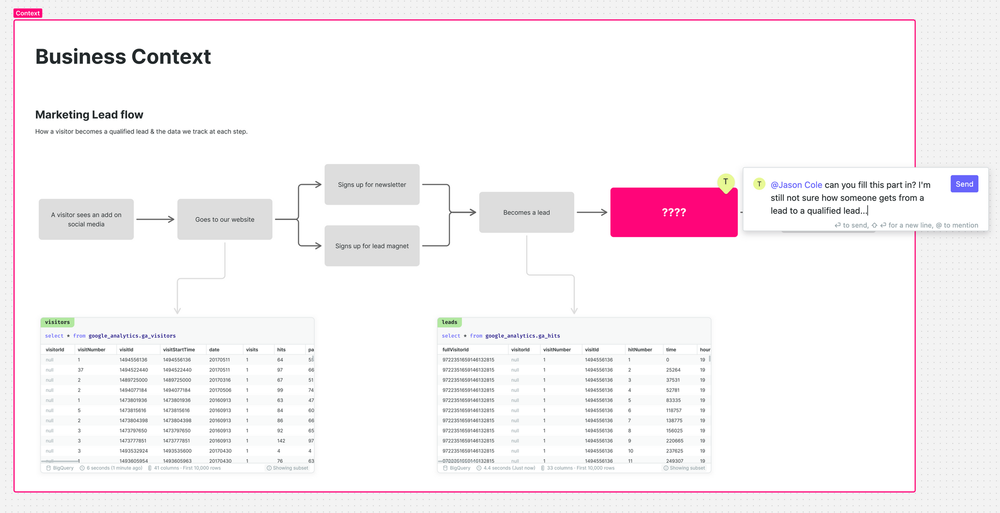Why people don't trust your numbers and what you can do about it
"Those numbers aren't right."
I’m not sure there is another phrase capable of eliciting as much rage, exasperation, and anxiety from a data person as this one. It is an instant dismissal of hours or days of hard work, an attack on our abilities and talents, and a reminder that the real world is not as logical or predictable as the data we work with.
This phrase is a signal that something is wrong, or likely many things are wrong. Fundamentally, this question speaks to a lack of trust. Maybe this business user doesn’t trust anything that comes from the data team because they’ve been wrong in the past. Maybe they don’t trust you because they haven’t worked with you yet. Maybe they don’t trust data at all and prefer to rely on anecdotal evidence, or maybe the numbers are actually wrong.
The currency we can’t afford to ignore
A lack of trust can swiftly and completely render a data team useless. Without it, no matter how performant your model, how beautiful your reports are, or how user-friendly your tables are, no one is going to use them.
Despite its importance, however, we still lack the language to describe trust and the tools to grow and maintain it. There’s too much at stake to have the luxury of ignorance much longer.
Data teams that operate without trust will see their credibility and value slowly diminish. And those that crack the trust nut can expect stakeholders to be more engaged, their work to be more valued, and the role of the data team to grow in unprecedented directions.
In this introductory article, I begin to break down the forces at work in data <> stakeholder trust, and how we can be intentional about curating and maintaining trust in our relationships.
Why trust breaks down
Before diving into solutions, we must first understand the forces behind the problem. A lack of trust between data and business teams often stems from a mixture of the following forces:
Misaligned expectations
As a boss once said to me, “Frustration is a miscommunication of expectations”. No two people or groups can get along if there is not a shared vision of what it means to work together. Think about your last piece of work. Did you and your stakeholders have the same expectations about what the work will deliver? How long it would take? The steps each of you were going to take to complete it?
Lack of shared context
Data and business teams can live in very different realities often without realizing it. Not taking the time to make sure you fully understand the business context around a request can lead you to do the wrong work. Similarly, not taking the time to explain the data context - including data definitions, and data model explanations - can make it hard to trust each other.
Stories with plot holes
This is the biggest mistake I see data teams make when reporting back to stakeholders. Not taking the time to craft the story you tell will lead to big plot holes. This could mean you didn’t explain exactly what the key metric means, what items are filtered out, what time range you’re talking about, etc. Much like when we watch a movie with plot holes, the stakeholder is instantly distracted by these gaps, making it hard to focus on any valuable insights you may have uncovered.
Inconsistent numbers
Maybe the biggest driver of the dreaded ‘that number isn’t right’ comment. When a stakeholder can get two different numbers for the same metric in different tools, they naturally, and rightly, question you and the numbers themselves.
Lack of transparency
Inconsistent numbers might not be so damaging if it weren’t for our lack of transparency. We rarely explainwe arrive at a certain metric. And when we do, it often lacks depth and specificity. Being open and transparent about our work can go a long way in establishing trust.
What a trust breakdown sounds like
How can we tell trust has started to deteriorate?
Silence.
The most passive and common way people demonstrate a lack of trust is by saying nothing. If you have spent a week working on a dashboard and it's not exactly what a stakeholder wants, sometimes they might just say “thanks” and move along instead of having the uncomfortable conversation to improve it. This is especially true if there is an alternate way to get what they need without you.
“Those numbers are wrong.”
A more confrontational outcome usually happens after repeated frustrations that the stakeholder hasn’t brought up. This refusal to believe your work is accurate is one of the worst signs that our relationship is in danger.
“I’ll do it myself.”
When a relationship doesn’t work long enough, one or both people, will separate and leave. When a stakeholder or business team truly doesn’t trust the data team anymore, they will sever ties by doing their own analytics. This might not always be made clear to the data team, but the result is still potent.
What to do when trust breaks down
The moments in which trust breaks down are some of the most difficult. Emotions run high, communication is quick and complex, and the relationship has the most to gain and lose.
The following tips are designed to help in the moments when trust breaks down with a stakeholder.
1. Respond with curiosity
We can’t always control how we react to something, but we can control how we respond. Even if you are frustrated or upset when someone starts challenging your work, responding too aggressively or shutting down entirely isn’t productive.
Try to set those emotions aside as much as possible and respond with curiosity.
- ‘What numberyou expect?’
- ‘Where did you get that number from? Is that where you normally get your data from?’
2. Find common ground as soon as possible
Maybe you disagree about a number, but it's important to find what youdoagree on quickly. This can remind everyone that you are indeed on the same team.
- “Here’s how I defined <metric>, is that how you define it too?”
- “Here are the things I excluded when doing this. Does that seem right?”
- “Maybe we should back up a bit. Here’s how I understand what we’re doing with this piece of work…”
- Think about the tools you are using - do you ever use the same ones? Having a standard place where you work together goes a long way in establishing common ground.
3. QA with a story, not tests
When you want to demonstrate that your analysis is correct, showing a stakeholder all the dbt tests it's passed doesn’t have much relevance. Instead, try filtering your analysis or data model for a single customer, client, or day.
This effectively turns your analysis into a story that is easy for everyone to follow.

4. Ask for their help
Most of the time we see ourselves as doing a service for the business when in reality we are partners. We cannot do our job well without their input, feedback, and context. So the quickest way to get a partnership back on track is to make sure they feel like they need to contribute too.
- “Would you mind mapping out the process of how a visitor becomes a qualified lead? It’ll help me make sure I have the data model right.”
- “I made a few prototypes for our final report - I need your help to pick which is best.”

5. When all else fails, step away and come back later
When things get really bad, don’t be afraid to walk away and come back later. Space can help us see things differently or let us calm down if we are dealing with difficult emotions.
- “I suggest we table this for now and come back tomorrow.”
The proactive approach
The best way to develop and maintain trust is through the proactive measures we takebeforetrust has broken down.
This is a topic that would have turned this article into a small pamphlet, so I'll save those tips for Part II. If you want to get Part II when it's ready, be sure to subscribe to the newsletter!
🙏 Thanks to Jerrie Kumalah for helping with this article!